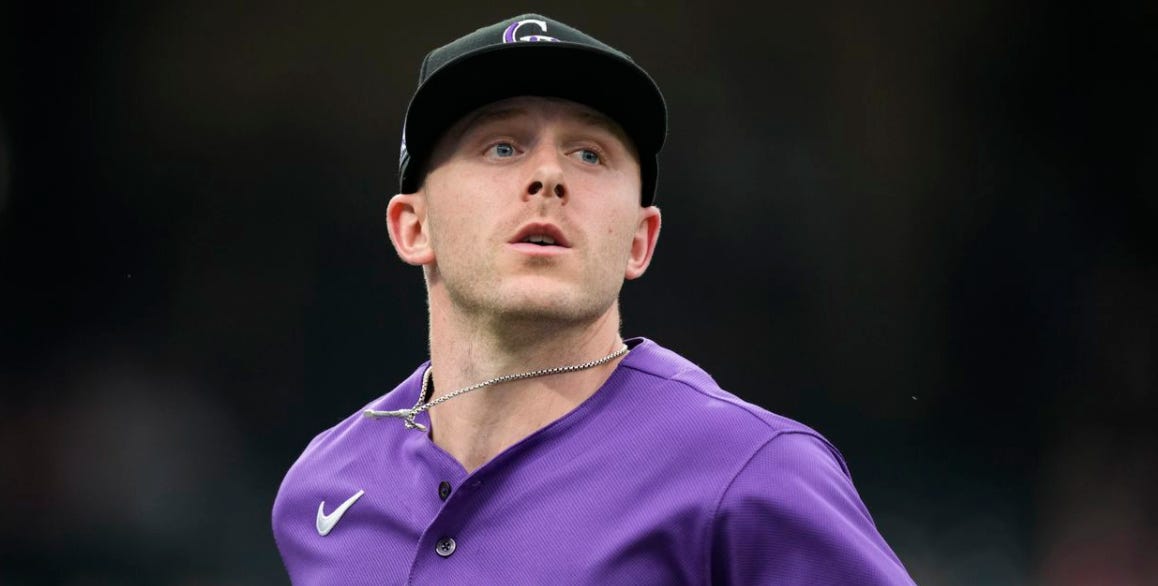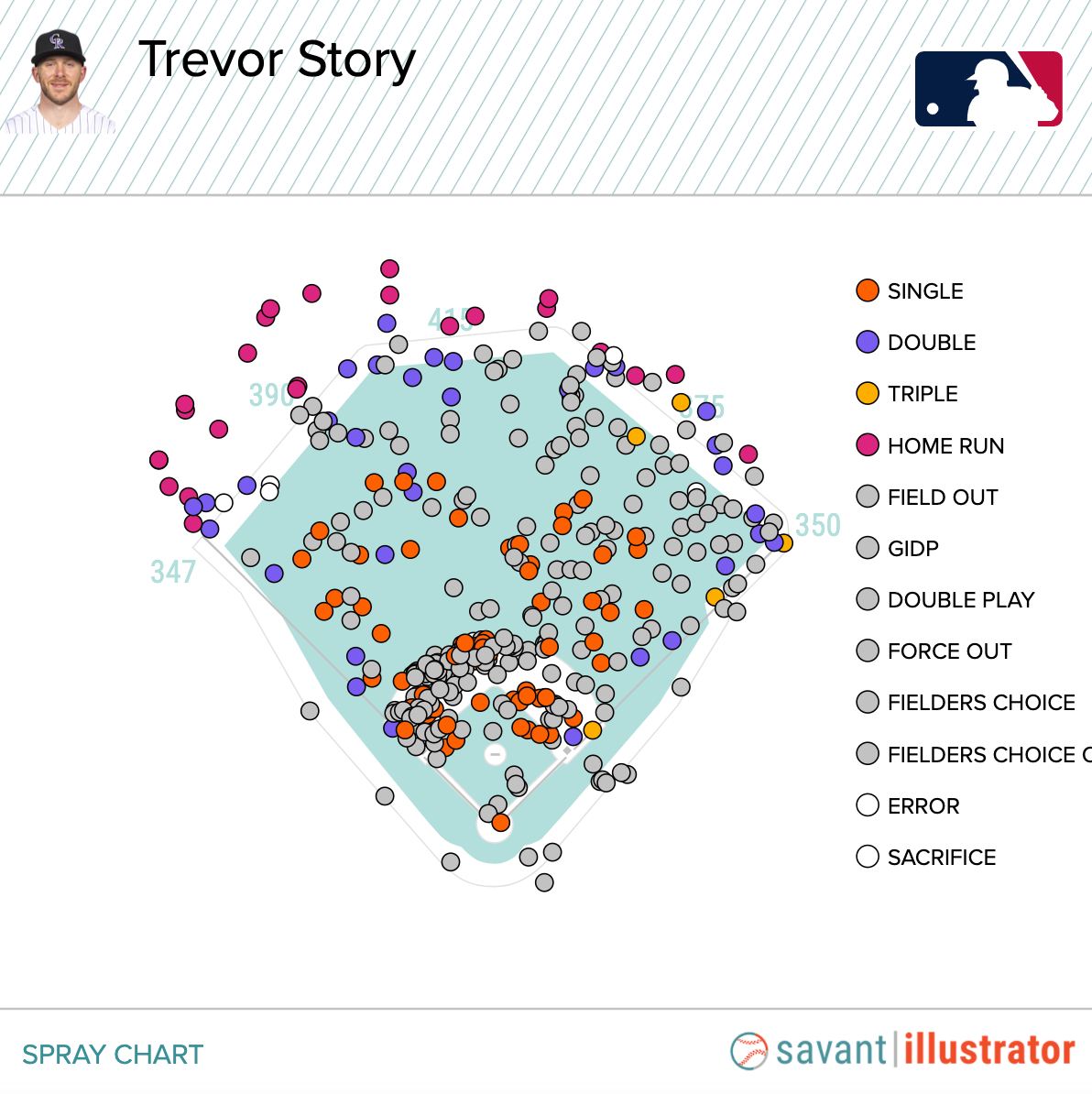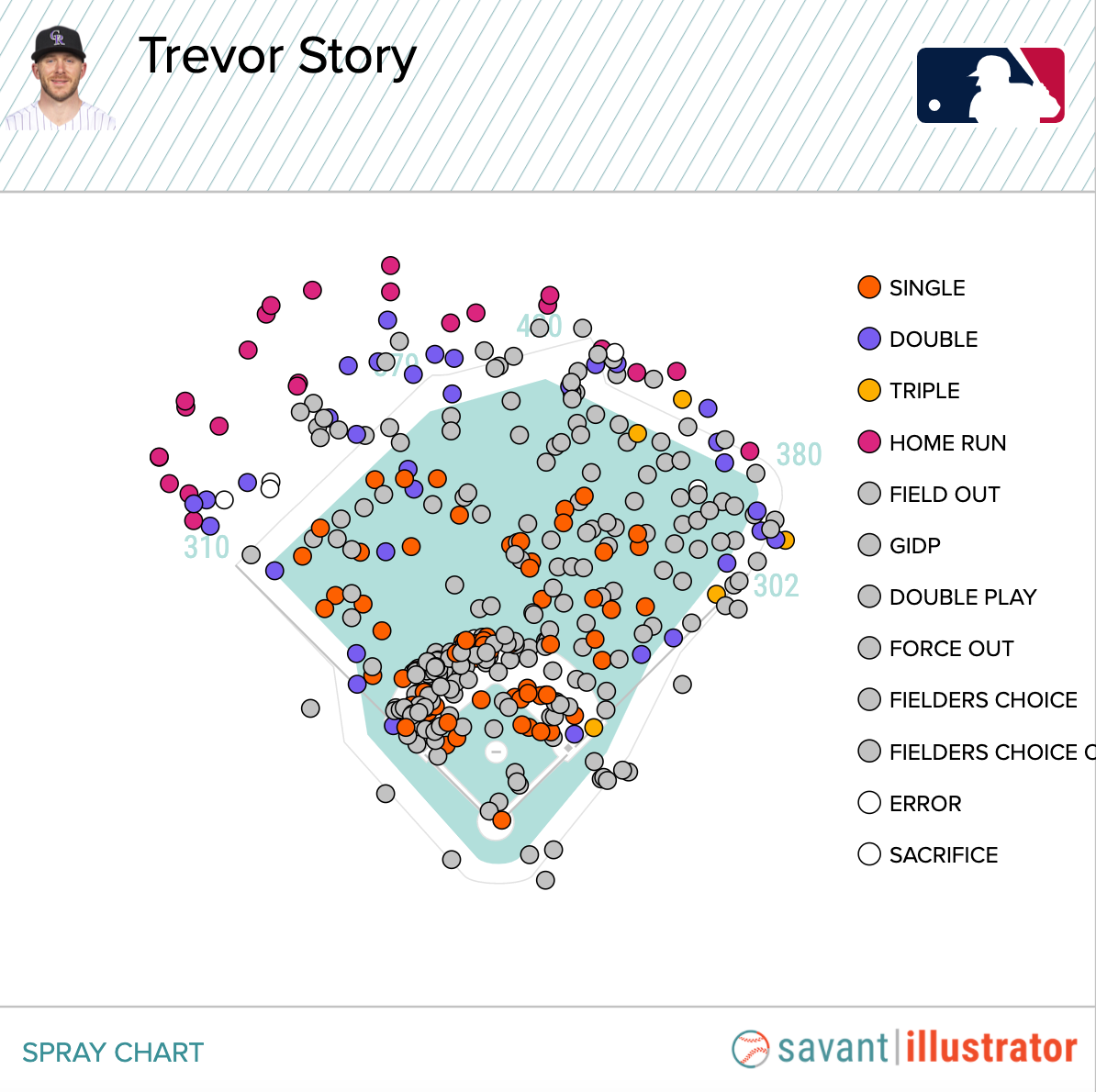Last night, while most sane people were having a beer, watching a movie, or, you know, sleeping, the Red Sox were negotiating with Trevor Story’s agents. In the early morning hours, they came to an agreement on a six year, $140 million contract for the now erstwhile shortstop to join the Boston Red Sox.
There’s obviously a lot to get to here, and we’ll get to all of it, but first, let me say by way of introduction that the Red Sox signed Trevor Story! You’re reading about it here on the Sox Outsider newsletter. I’m Matt Kory. Hello! I’m the guy who organizes the words around here. If you’re wondering who I am, I’m a writer who has written at The Athletic, FanGraphs, Baseball Prospectus, and a bunch of other places, and now I’m covering the Red Sox here. So please subscribe, hop along for the ride. I hope it’ll be fun and educational, and if nothing else it’s free, so you should subscribe! Thanks.
Now let’s get to Story!
The Contract
This isn’t a Carlos Correa I’ll-hang-for-a-year-and-see-what’s-up kinda deal. This is a long term commitment by team and player. This is a six-year contract for $140 million, that’s an average annual value of $23.3 million a season. Story will be the second highest paid Red Sox by AAV behind Chris Sale ($3.3 million more than Xander). Story can opt-out after the fourth year (following the 2025 season), but the Red Sox can negate that opt-out by adding a seventh season to the contract at a cost of $25 million (when you subtract the $5M buyout that increases the total value to $160 million, should the Red Sox do that). Trevor Story will be in Boston for a while and he’s going to be quite well paid for the privilege.
The Cost
This will almost certainly put the Red Sox over the Luxury Tax threshold for the 2022 season. There is a lot to say about how to manage salaries in future seasons, but for now the Red Sox are over the threshold and will have to pay a small penalty. It’s worth wondering what effect this will have on the team making additions at the trade deadline, but again, that’s a question for later.
This is not a permanent trip to Cap Hell though. A tremendous amount of money comes off the Red Sox’ books after this season and that will drop them well below the tax threshold, at least as things stand now. By my math, $97 million will drop off after this season, and that’s not including Xander Bogaerts. So if they want it to be, this foray into luxury tax territory can be a one year thing. At least for now though, charges of being cheap or refusing to spend over the luxury tax threshold don’t hold water.
Finally, the Rockies did offer Story a qualifying offer after the 2021 season, an offer Story predictably refused. Based on my reading of the rules on MLB.com, the Red Sox will lose their third round pick in the 2023 draft as the penalty for signing a qualified free agent.
Trevor Story: Actual Baseball Player
All of that and we’ve yet to talk about Story the player. So let’s do that. Story was a first round draft pick by the Colorado Rockies in the 2011 draft, at 45th overall (it was the comp round) out of high school in Irving, Texas. Five picks earlier the Red Sox took Jackie Bradley, Jr.
A two-time All Star and three-time MVP vote getter, Story has good power, especially for a middle infielder. In his career, he has a .272/.340/.523 slash line, with 158 career homers in six seasons (about 26 a season). He has some speed too, with 100 stolen bases on his career (he’s been caught 30 times) including 20 last season. Alex Cora is going to love that.
Story is patient enough at the plate, walking in 8.5 percent of his career plate appearances, and his strikeouts are fine for this era, 27.6 percent for his career, but that percentage has dropped over as his career has progressed. He’s at 25 percent over the past four seasons, and was at 23.4 percent last season. In fact, if you ignore the silly short 2020 season, Story posted both the lowest K rate and highest BB rate of his career last season.
In the field, Story has been above average, but that comes with a caveat, which we’ll get to. He’s slightly better to his right than to his left, and he has an above average throwing arm. The entire package is one that should work at (spoiler!) second base or shortstop going forward.
Here’s that caveat. Last season Story was a below average shortstop after putting up above average numbers during most of his career. Also last season - possibly related! - Story dealt with an injury to the right elbow on his throwing arm. The injury required a stay on the IL and an MRI, though ultimately Story gutted through 142 games for the Rockies. Presumably the Red Sox have done their due diligence and are satisfied that his injury won’t impact him going forward. Or possibly an evil multi-billionaire appeared before Chaim Bloom and gave him $160 million with the one requirement he had to spend it badly. Hard to know which one!
Story will be 29-years-old this 2022 season, so he’s just exiting his prime years. Since 2018, he has put up seasons of 5.1 fWAR, 6.0, 2.5, and 3.5. The 2.5 came in the shortened 2020 season. Had the season been of regular length, Story projected to about 6.2 fWAR, a figure which would have been the highest of his career. Last season, he dealt with the elbow injury, but was still a valuable player.
It’s impossible to predict the future, but before the 2021 season Story would been listed among the safer bets. In fact, had Story hit the market a season earlier, he likely would’ve been in line for a contract of roughly twice the size he just signed. The 2021 season and his elbow injury throw that into some question. Story should be able to remain at second base long term, but if his elbow proves troublesome, the bat could take a step back. Overall though, he’s a well-rounded player with power, batting average, speed, and good fielding.
Roster Fit
It was reported and Alex Cora has confirmed that Story, who has always played shortstop in his career, will move to second base this season. Xander Bogaerts will remain at shortstop. Story fills the hole in Boston’s infield and gives them a solid second baseman for the first time since Dustin Pedroia, or if you’re being generous, the 37 games Ian Kinsler played second base in 2018.
Coors Field Questions
The elephant in the room is Coors Field. Rockies hitters have a huge advantage when it comes to their home ballpark because of its high altitude, and it shows up in their home batting numbers. Story is no exception. Including his injured 2021 season, Story has been seven percent above average at the plate by FanGraphs’ wRC+ for his career at home, but nine percent below league average by the same metric on the road.
The storyline goes like this: Rockies hitters are products of Coors Field which is a huge hitters park and a home run haven. Some of that is partially true. Coors Field is a big hitters park, but it is not a home run haven. Instead, to attempt to counteract that potentiality, Coors Field was designed with a gigantic outfield. The result is that, yes, more homers are hit at Coors Field than league average, but Coors isn’t the top home run ballpark in baseball. That honor goes to the Cincinnati Reds. Coors Field is, in fact, fifth, according to StatCast.
Instead, Coors Field’s giant playing surface forces fielders to cover way more ground than anywhere else and the result is more base hits, and specifically more extra base hits. Coors allows the most singles in baseball, the second most triples behind Comerica Park in Detroit, and the third most doubles, behind Fenway and PNC Park in Pittsburgh.
But more importantly as far as Story goes, is the effect that altitude has on Rockies players when they travel from Denver to play elsewhere. Mike Petriello of MLB.com has written about this phenomenon, so I’ll just quote him here from an article he wrote back in 2015.
Petriello updated that article in February, 2021. It’s worth reading in full (link here) but the short version is that his premise still holds.
In fact, thanks to Baseball Savant, we can take Trevor Story’s 2021 batted ball data from Coors Field and superimpose it over Fenway Park. Here’s how he did at in 2021 at Coors Field.
And here’s that same batted ball data but over an image of Fenway.
Some of those line drive home runs might turn into doubles, but a good number of those fly balls that were caught for outs or fell for doubles at Coors will turn into homers. Story’s particular batted ball data, should the patterns hold, looks like it will play well at Fenway.
So there’s no particular reason to think Trevor Story’s offensive performance is a creation of Coors Field, nor is there a reason to think Story won’t be able to hit at Fenway Park. If healthy, Story should continue to be an above average offensive player both at Fenway and on the road.
Bogaerts
The first thing I thought of after hearing the news that Story signed in Boston was Xander Bogaerts. Bogaerts has an opt-out in his contract after this season, and it’s one he’s extremely likely to exercise as he’s underpaid relative to the market. Well, probably. But we’ll get to that another time. For now though, that’s what Bogaerts thinks. That’s what is agent, Scott Boras, thinks. So that means either a contract extension or a trip to the free agent market will be in order.
What does the addition of another All Star shortstop to the team do to Bogaerts? The answer is, of course, I have no idea and neither does anyone else other than Xander Bogaerts. It’s one of those we’ll have to wait and see things, but I do think there is some clubhouse risk associated with this move, risk that will be placed on the shoulders of Alex Cora to manage.
Before moving off this point, it’s worth pointing out that Bogaerts himself endorsed the idea of bringing in Story as recently as this past week. Story signed specifically to play second base, so who plays where should not be a problem in 2022. It’s after that, and what people think about after that, that is worrisome.
The Result
Story does a number of things for the Red Sox. He gives them another above average bat and lengthens the lineup. He gives them a long term answer at second base and a fall back option at shortstop should Xander Bogaerts get hurt during the 2022 season or leave following it. For 2022, he makes the Red Sox better both in the field and at the plate. For 2023 and beyond he gives the Red Sox a strong floor at an important position.
Further down the roster, signing Story pushes Enrique Hernandez to center field full time, which makes the best use of Hernandez’s skills. Story also pushes Christian Arroyo to the bench as a backup infielder, a role he’s probably more suited for than starter.
As for the front office, this is the biggest splash the Red Sox have made since signing David Price before the 2016 season. It absolves the Red Sox front office of charges of being cheap, at least until next off-season. Most importantly, the Red Sox are a better team today than they were yesterday. Considering what has happened in the AL East since the end of the 2021 season, that wasn’t just extraneous, it was necessary.
Thanks for reading. Remember to subscribe for more on the Story story (I couldn’t resist) and lots more to come.







